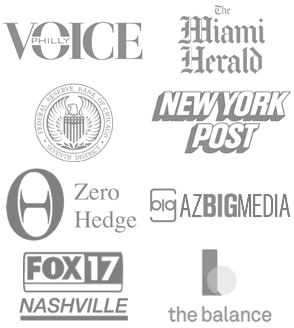When purchasing a home, many borrowers are required to pay private mortgage insurance (PMI) or mortgage insurance premiums (MIP) to protect lenders in case of default. However, VA loans, which are backed by the U.S. Department of Veterans Affairs, offer a significant advantage: they do not require mortgage insurance. This unique feature makes VA loans one of the most cost-effective home financing options for eligible service members, veterans, and surviving spouses. But why is this the case, and what are the alternatives? This article explores the VA loan program, its benefits, and why mortgage insurance isn’t required.
Understanding VA Loans and Insurance Requirements
A VA home loan is a veteran mortgage program designed to help military personnel and veterans achieve homeownership with no down payment and favorable loan terms.
Since VA loans are guaranteed by the government, lenders face less risk, allowing them to offer better terms to qualified borrowers.
Key Benefits of VA Loans:
- No Down Payment Requirement – Unlike conventional and FHA loans, VA loans allow 100% financing.
- No Private Mortgage Insurance (PMI) – Saves borrowers hundreds of dollars per month.
- Competitive Interest Rates – Typically lower than conventional loan rates.
- Flexible Credit Requirements – More lenient than traditional mortgage options.
- Limited Closing Costs – The VA limits fees that lenders can charge.
One of the most significant advantages is the lack of mortgage insurance requirements, which helps VA borrowers save thousands of dollars over the life of the loan.
What is Mortgage Insurance?
Mortgage insurance is designed to protect lenders when a borrower makes a small down payment or has a higher risk profile. It ensures that if the borrower defaults on the loan, the lender can recoup some of their losses.
Types of Mortgage Insurance:
- Private Mortgage Insurance (PMI): Required for conventional loans with a down payment of less than 20%.
- Mortgage Insurance Premium (MIP): Required for FHA loans, regardless of down payment size.
- USDA Loan Guarantee Fees: Act as mortgage insurance for USDA loans.
Mortgage insurance can add $100–$300 per month to a borrower’s mortgage payment, depending on the loan amount and risk factors.
Why VA Loans Do Not Require Mortgage Insurance
1. Government Backing Eliminates Lender Risk
Unlike conventional and FHA loans, VA loans are government-backed, meaning the Department of Veterans Affairs guarantees a portion of the loan to the lender. This guarantee acts as insurance for lenders, eliminating the need for PMI or MIP.
2. The VA Funding Fee Replaces PMI
Although VA loans do not require mortgage insurance, they do include a VA funding fee. This one-time fee helps sustain the VA loan program and offsets the cost of providing no-down-payment loans.
VA Funding Fee Breakdown:
| Loan Type | First-Time Use | Subsequent Use |
|---|---|---|
| No Down Payment | 2.15% of loan | 3.3% of loan |
| 5-9.99% Down | 1.5% of loan | 1.5% of loan |
| 10%+ Down | 1.25% of loan | 1.25% of loan |
Exemptions: Certain borrowers, including disabled veterans and surviving spouses, may qualify for a VA funding fee waiver.
3. VA Loans Encourage Homeownership Without Extra Costs
The VA loan program was designed to make homeownership affordable for military personnel and veterans. By eliminating mortgage insurance, VA loans keep monthly payments lower, allowing borrowers to allocate their finances toward homeownership, savings, and financial stability.
The Cost Savings of Not Paying Mortgage Insurance
Comparison of VA Loan vs. FHA and Conventional Loans
Consider a borrower taking out a $300,000 home loan with different mortgage programs:
| Loan Type | Down Payment | Monthly Mortgage Insurance | Total Cost Over 5 Years |
| VA Loan | $0 | $0 | $0 |
| FHA Loan | 3.5% | $200 | $12,000 |
| Conventional (PMI Required) | 5% | $150 | $9,000 |
By avoiding PMI or MIP, VA loan borrowers can save thousands in the long run, making homeownership more affordable and accessible.
VA Loans – The Shield Against Unnecessary Costs
Think of a VA loan as a financial shield, protecting military borrowers from unnecessary costs like PMI and high-interest rates. Just as the military protects the nation, VA loans safeguard service members’ financial futures, allowing them to achieve homeownership without excessive financial burdens.
Can VA Loan Borrowers Still Get Mortgage Insurance?
While VA loans do not require mortgage insurance, borrowers can opt for private mortgage insurance policies if they desire additional protection. However, this is rarely needed, as the government’s loan guarantee already provides strong coverage.
Alternatives for Borrowers Who Do Not Qualify for a VA Loan
For those who do not qualify for a VA loan but want to avoid mortgage insurance, here are some alternative financing options:
1. Conventional Loans with 20% Down
Borrowers who put 20% or more down on a conventional loan can avoid PMI. However, many homebuyers do not have the funds for such a large down payment.
2. Lender-Paid Mortgage Insurance (LPMI)
Some lenders offer LPMI, where the cost of mortgage insurance is built into the loan’s interest rate. This may result in higher monthly payments but no separate PMI charge.
3. Piggyback Loans (80-10-10 Financing)
A borrower can use an 80-10-10 loan structure, where they take out:
- 80% primary mortgage
- 10% secondary mortgage (home equity loan or HELOC)
- 10% down payment This strategy avoids PMI but requires qualifying for two separate loans.
4. FHA Loans with a Larger Down Payment
While FHA loans require MIP for the life of the loan, making a larger down payment (10% or more) reduces the duration of mortgage insurance to 11 years instead of the full loan term.
One of the greatest advantages of VA loans is that they do not require mortgage insurance, making them one of the most affordable and accessible home loan options for military members and veterans. Instead of PMI, VA loans use a one-time funding fee, which can often be rolled into the loan.
For those eligible, a VA loan offers unmatched financial benefits, reducing monthly mortgage costs and saving thousands over time. Just as the VA loan program was designed to honor and support veterans, it also provides financial security by eliminating unnecessary expenses—helping military families achieve the dream of homeownership without additional financial strain.
If you qualify for a VA loan, it is one of the best mortgage options available, ensuring low costs, flexible terms, and no unnecessary mortgage insurance expenses. For veterans and active-duty service members, this benefit is a valuable financial advantage worth exploring.
FAQ for VA Loans
Can You Have Two VA Mortgages at the Same Time?
Yes, you can have two VA mortgages at the same time under certain conditions. The VA allows eligible borrowers to use their remaining entitlement to purchase a second home if they are relocating due to military orders, job changes, or family needs. However, lenders will evaluate loan limits, entitlement amounts, and debt-to-income ratios to determine eligibility. Borrowers should check their remaining VA entitlement with the Department of Veterans Affairs or their lender.
Is a VA Mortgage Assumable?
Yes, VA mortgages are assumable, meaning a qualified buyer can take over the loan with the same interest rate and terms. The buyer must meet the lender’s credit and financial requirements and assume the VA loan liability. If the buyer is not a veteran, the original borrower may lose their VA entitlement until the loan is repaid. Assumable VA loans can be beneficial when interest rates rise, making them attractive to buyers.
Is VA Disability Considered Income for a VA Mortgage?
Yes, VA disability benefits are considered income when applying for a VA mortgage. Lenders treat disability compensation as stable, tax-free income, which can help borrowers qualify for better loan terms. Additionally, veterans receiving VA disability benefits may be exempt from the VA funding fee, reducing overall loan costs. Providing VA disability award letters and proof of benefit deposits is required for income verification during the loan approval process. Learn more about assumable mortgages.

